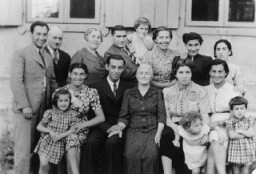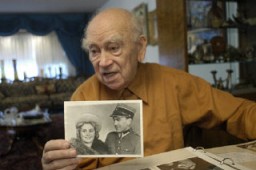You searched for: %E6%98%8E%E5%8D%87%E4%BD%93%E8%82%B288%E3%80%90%E6%89%8B%E5%8A%A8%E8%BE%93%E5%85%A5%E2%88%B6___bet126.net___%E3%80%91%E8%80%81%E7%89%8C%E8%8F%A0%E8%8F%9C%E5%B9%B3%E5%8F%B0%E5%BC%BA%E5%8A%BF%E5%9B%9E%E5%BD%92%E9%99%90%E6%97%B6%E4%BC%98%E6%83%A0%E6%B4%BB%E5%8A%A8%E5%BC%80%E8%B7%91%EF%BC%81
<< Previous | Displaying results 131-140 of 171 for "%E6%98%8E%E5%8D%87%E4%BD%93%E8%82%B288%E3%80%90%E6%89%8B%E5%8A%A8%E8%BE%93%E5%85%A5%E2%88%B6___bet126.net___%E3%80%91%E8%80%81%E7%89%8C%E8%8F%A0%E8%8F%9C%E5%B9%B3%E5%8F%B0%E5%BC%BA%E5%8A%BF%E5%9B%9E%E5%BD%92%E9%99%90%E6%97%B6%E4%BC%98%E6%83%A0%E6%B4%BB%E5%8A%A8%E5%BC%80%E8%B7%91%EF%BC%81" | Next >>
-
Röhm Purge
ArticleThe Röhm Purge (the “Night of the Long Knives") was the murder of the leadership of the SA (Storm Troopers), the Nazi paramilitary formation led by Ernst Röhm. Learn more.
-
Herzogenbusch Main Camp (Vught)
ArticleThe Herzogenbusch concentration camp in the Netherlands began functioning in January 1943. Learn about its establishment, administration, prisoners, and conditions there.

-
Hermann Ludwig Maas
ArticleHermann Ludwig Maas, a Protestant pastor in Heidelberg, Germany, was a rescuer and clergyman who stood in solidarity with the Jewish community.
-
Dr. Robert Ritter visits a "Gypsy camp"
PhotoDr. Robert Ritter talks to several residents in a Zigeunerlager ("Gypsy camp"). Hamburg, Germany, 1940. During the Nazi era, Dr. Robert Ritter was a leading authority on the racial classification of people pejoratively labeled “Zigeuner” (“Gypsies”). Ritter’s research was in a field called eugenics, or what the Nazis called “racial hygiene.” Ritter worked with a small team of racial hygienists. Among them were Eva Justin and Sophie Ehrhardt. Most of the people whom Ritter studied and…

-
Eva Justin interviews a Romani woman interned in a "Gypsy camp"
PhotoA color photograph of Eva Justin interviewing a Romani woman interned in a "Gypsy camp." Vienna, Austria, 1940. During the Nazi era, Dr. Robert Ritter was a leading authority on the racial classification of people pejoratively labeled “Zigeuner” (“Gypsies”). Ritter’s research was in a field called eugenics, or what the Nazis called “racial hygiene.” Ritter worked with a small team of racial hygienists. Among them were Eva Justin and Sophie Ehrhardt. Most of the people whom Ritter studied and…

-
A family interned in a "Gypsy camp"
PhotoA family stands outside of their wagon while interned in a Zigeunerlager ("Gypsy camp"). In the background, children are crowded around Eva Justin. Justin worked for the Center for Research on Racial Hygiene and Demographic Biology. Schleswig-Holstein, Germany, 1938. During the Nazi era, Dr. Robert Ritter was a leading authority on the racial classification of people pejoratively labeled “Zigeuner” (“Gypsies”). Ritter’s research was in a field called eugenics, or what the Nazis called…

-
Kristallnacht
ArticleOn November 9–10, 1938, the Nazi regime coordinated a wave of antisemitic violence. This became known as Kristallnacht or the "Night of Broken Glass." Learn more

-
Lodz
ArticleNazi authorities established the Lodz ghetto in 1940. Learn about living conditions and forced labor in the ghetto, as well as deportations to and from there.

-

-
Life After the Holocaust: Norman Salsitz
ArticleAfter WWII and the fall of the Nazi regime, Holocaust survivors faced the daunting task of rebuilding their lives. Listen to Norman Salsitz's story.

